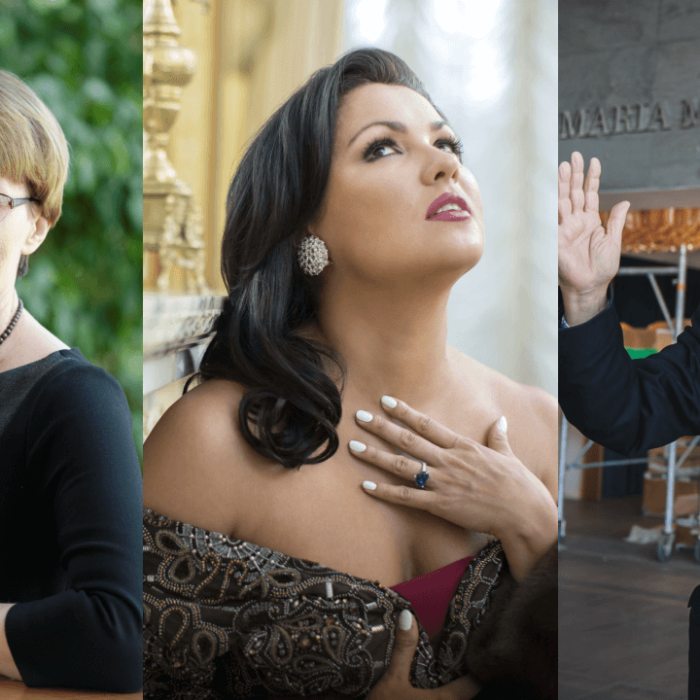
The worlds of classical operatic and its temperamental present have a complex relationship when dealing with the upholding and rejection of entrenched classicism in operatic productions. It is a relationship that seems to neither effectively nor fully answer the question of “Who is opera for today?” It appears as if modern opera is stuck in a limbo, where directors valiantly try to do too much at the same time, in the end doing very little. I have to ask my readers, who is opera for?
In a way, the opera “industry” (it seems rather odd using that word) has broadened the ideas of what an operatic performance can be. At the same time, however, it has recast pre-20th century repertoire (in many cases 20th century as well) in what must respectfully be called a conceptual “glass-box,” where curators are allowed to change the genetics of its contents, while still saving face by providing commentary on their methodologies. By rendering operas but empty constructs that can be played with by “environmental designers” (or directors) it feels like an anti-historical chapter is opening up in opera’s 21st-century book, where a willingness to overlook respected tradition for the eccentric and the new is the preferred method to getting audiences into seats. This, to someone who was fed on the classics as a child, is quite a scary notion to witness.
As I will soon address, however, this could very well be in response to the over-emphasizing of operatic traditionality, perhaps a cumulative cultural reaction to the notion that “opera must be X.” A balance between post-structuralist creativity and historical fidelity must be demarcated, nevertheless, and the fact that some elements are not changeable, and moreover should not be changed, must be realized. Where that line actually is cannot be accurately understood, and will always fluctuate from person to person, as it should. Yet a single line from Nietzsche demands our attention, “Their critical pens never cease flying, for they have lost power over them and are led by them rather than leading them.”
In the time of seemingly unending revision and inescapably subjective storytelling of all things art (opera or otherwise), will opera hold fast to tradition and its “high art” creative legacy? Should it? I am not yet sure.
The Consequences of Paraphrasing
The cinematic adoption of operatic repertoire has done much to increase audience size and expand the reach of the genre to those who would not normally venture into the formal halls and sterile chambers of music, where enforced silence is the norm and unspoken regulations on audience etiquette are somehow clear to everyone but you. Several habits have emerged from opera’s expansion into the popular mainstream, however, in the form of, what I think fits here, “operatic paraphrasing,” indicating not necessarily that the content has changed, so much as the context in which the content finds its home base.
The most relevant indication of operatic paraphrasing would be in operatic productions where the Urtex (the original version of the operatic material) is subjected to numerous layers of extraneous revision, whereupon what is presented on-stage has significantly distanced itself from what the composer intended. Numerous productions reframe plots and themes in ways that seem almost intentionally antithetical to what the composer’s original creation was, and while I’m not saying that one must fully eradicate all creative freedom from contemporary opera, having a clear and conscious dedication to what the composer had intended should be regarded as a fundamental. The technical term is Werktreue, denoting fidelity to the original representation of the artistic object by the composer, while terms like Regieope and Regietheater (Director’s Opera/Theater) put the “curator” of the art into the driver’s seat, signaling a growing preference for interpretative freedom. While much could be said about the dangers of encouraging directorial management over operatic narratives and the “subjectification,” or external politicization, of opera and its manifold interpretations, the bottom line is that any and all changes to the genetics of an operatic performance that are not first indicated by the composer will be changing something about the opera: that much is certain.
Changes are important but must find themselves rooted in some ounce of fidelity to the original vision of the composer’s universe, not the director’s. Audiences can be easily coaxed into believing that what they see is reality itself, so presenting opera from a “paraphrased” perspective may be subjecting the operatic material to lasting damage, not for those on-stage but those off.
Contemporary as Aggregate
What is contemporary operatic production if one thinks about its constitution? I put forward, as I am sure many others do as well (Mark Twain certainly did when he wrote “There is no such thing as a new idea”) that what we understand as opera today is no more original than what was composed in the 20th and 21st centuries. Yes, we have come up with radically new mediums of artistic creativity, novel techniques, and methodologies to weaponize natural vibrations to invoke our worldviews, and ingenious routes to merge mediums together in a temporal-spatial dance. But as the human race desperately tries to distance itself from the past, trying in vain to distinguish itself as somehow “better” or “more improved” (intellectually and morally speaking), the more vivid our unshakeable connection with the past is perceived. This is visible in the operatic tradition since the 18th century and the dawn of the notion that opera could be more than just entertainment: that it could instead be intoned philosophy useful for instigating sociocultural change.
Opera in the 19th century was imbued with the notion that it was indeed a tool to help raise the consciousness of the masses with cosmopolitan nods to life’s highs and lows, best embodied in the traditions of “low” verismo (think Puccini’s realism) and “high” verismo (Verdi’s majestic tales). Simply put, those who created operas were no longer just creating staged spectacles, but living, breathing versions of our world in sounding art for us to view as both partakers and observers. At no point has opera only been about portraying narratives: it has been about doing so in captivating and histrionic manners that will keep audiences enthralled from beginning to end, hopefully providing the necessary details along the way that will help them understand what is being represented on-stage. There’s a tenuous balance between the spectacle and the allegory, and more must be said about the conversation that such a pairing creates.
But what I’m trying to say is that operatic productions nowadays could be thought of as the contemporary version of a very long-winding project of recasting life into parabolic frames, initiated as early as the Babylonians when they first started giving tune to their epics, carried through Greek theater, and slowly arriving to what we have today. Thus, one cannot so quickly chide contemporary opera for being sick of its historical weight. That tether, however, is what gives the operatic genre its artistic credence, and without the knowledge of where the art form came from and its primordial intentions, directors may find themselves at odds with their genre, and by extension, their audience.
Considering the Audience
A huge component in the requirement of maintaining a connection with the historical foundations of opera is an easy one: comprehensibility! Not necessarily for the performers or director, but for those who are subjected to the performance, those who are lesser-skilled in the art of operatic performance but still musically inclined and interested, and those who sit outside of the musical arts entirely but are intrigued nonetheless. One of my most acute criticisms of the contemporary operatic world is that while artistry and creativity are undoubtedly important, if there is a staunch difference in cogency levels and acuity needed in order to understand the art itself, then the person to whom the art has been created must grapple with the fact that audiences are not able to peer into the unfolding narrative well enough to gain necessary contextual clues to help themselves.
Despite the pianistic predilection, the 19th-century pianist and composer Nikolai Medtner is a perfect example of one whose compositional sagaciousness was not outfitted to meet the demands of the audience, and he paid for this mistake in public prestige. In one talk I previously attended, he was referred to as a “musician’s composer,” and as laudable as that accolade may inevitably be, the point of art is to create a sonic manifestation of one’s life experiences for others to digest. A lot of what is being created in the operatic present, a loud and cacophonic bricolage of every artistic movement that has come before us, deals with what could be called the “aesthetics of deconstruction” in order to recast narratives with their argument-counterargument aired at the same time. If a director is staging “Don Giovanni,” they must both present him as himself and as a perceived villain, stratifying the process of allowing the opera to talk for itself. This is what I mean: directors are trying to do too many things at once!
You can see it within music as well. In the truly nefarious wake of the post-formalist techniques of aleatoricism, post-Dadaism, serialism, minimalism, electronicism, and what I’m calling “historical maximalism,” along with their “post” antecedents, composers no longer felt indebted to their listeners. Instead, their listeners were only secondary to the process of musical creation and were expected to feed upon what was given to them. This mindset has created a Frankenstein’s monster of the operatic world, where old operas are fed through the machine of the new opera lens, obfuscating any and all relationship to the audience which had existed for time immemorial before Schoenberg and his followers drastically reduced the importance of organicism with their Promethean attempt to control nature itself.
A Need for Tradition
Where do such points leave us then, in the here and now? It can certainly be said that operatic traditionalism and their historically minded interpretations are not going to disappear in the near future, but nor are the Glass/Adam/Heggie/Adès trajectory of neo-Wagnerian, operatic spectacles going to slow down anytime soon either. The usage of unambiguously, socio-politically-heightened themes and the ever-expanding hand of Hollywood (vis-a-vis “the entertainment industry”) into the operatic space may do more harm than we realize, and further destabilize the already fragile ecosystem of music culture in the 21st century.
Ever since the middle of the 20th century, particularly in 1951 with the live broadcasting of Menotti’s one-act opera “Amahl and the Night Visitors” on December 24th in the famed studio 8H in New York, followed with the fast adoption of operatic literature into movies of all kinds (“Pretty Woman” 1990; “Quantum of Solace” 2008), along with more in-home entertainment on television (“Looney Tunes”; “Family Guy”; “The Simpsons”), opera has entered the public conscious like never before. But that does not mean audiences understand what they are watching, nor should they when opera is brought into such popular contexts. In my opinion—of course only my own—it is for opera houses to uphold the “high art” title that they have held onto for so long, and remain a beacon in the sea of mainstream everywhereness in order to remind us, the audience, of the legacy of this nearly 430-year-old art form (all thanks to the pioneering Jacopo Peri and his opera “Dafne“).
Without their leadership, opera will simply become a popular fad. Not that it should not, but if that occurs, who is opera for?
Categories
Editorials

